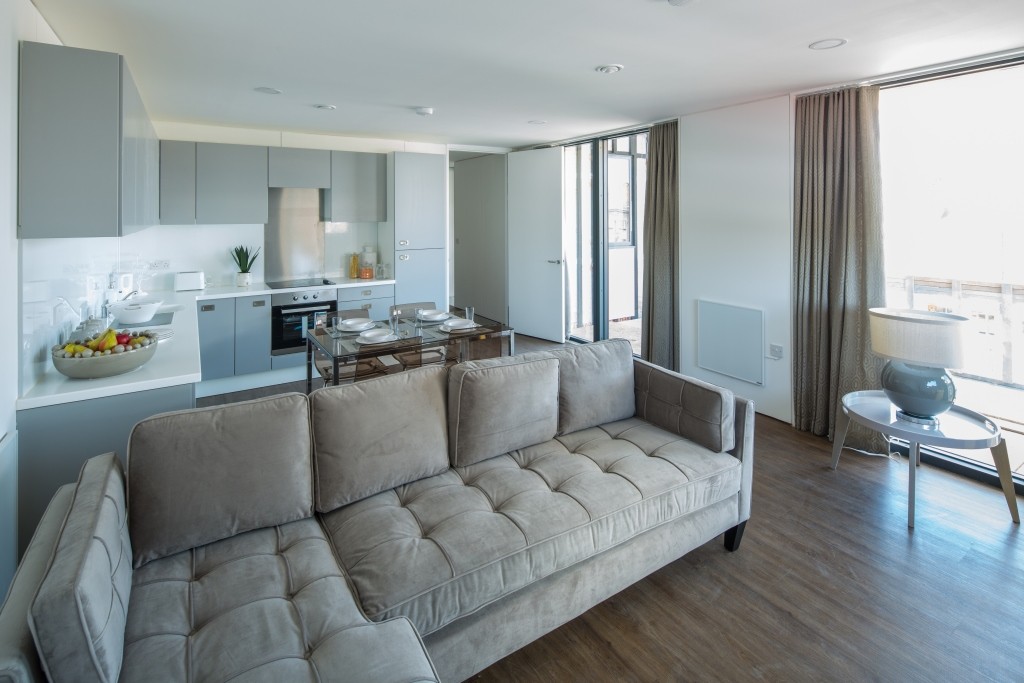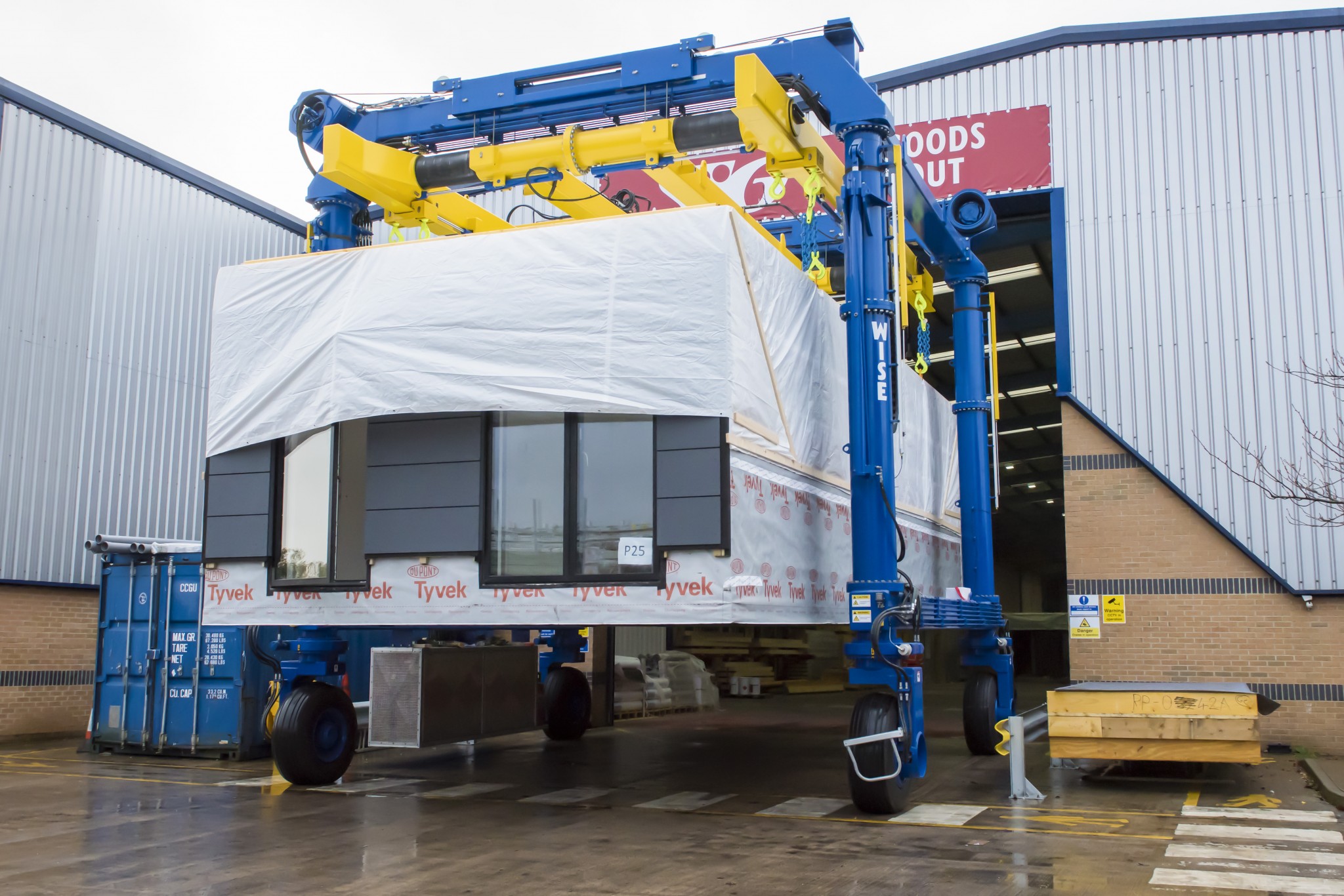
Interest in modular homes has been re-ignited since the government’s housing white paper recognised that they can deliver housing solutions in a fraction of the time of those built using traditional methods.
It’s often said that there is no such thing as a new idea and, indeed, we have been here before… in the post-war era of single-storey prefabs, hurriedly constructed as a temporary housing solution on sites flattened by bombs.
But the new modular homes are a world apart from those much-maligned properties and the word ‘prefab’ is not one you’ll hear at the SIG Offsite factory in Derbyshire, where houses, apartments, hospital wards and more are manufactured before being delivered to sites around the country.
These new homes are definitely built to last, can feature several storeys and have fully customisable layouts. I’ve been inside and they look just like the swish, modern homes that they are. You wouldn’t know they were any different from bricks and mortar.
The advantages of building in this way are many so, following my visit to the SIG Offsite factory for BBC Breakfast, we take a closer look at modular homes and why they could provide part of the answer to our housing problems.
How can modular homes help the housing shortage?
Last year the National Association of Estate Agents reported that that nation needed an additional 1 billion bricks to build enough housing to meet our needs. Brick prices are also likely to rise due to the Brexit effect, as many of the raw materials are imported from the EU and, on top of this, there’s a shortage of skilled construction workers.
Issues with materials and labour can be solved by the use of modular homes, which don’t use bricks and are built off site, freeing up construction workers to complete other elements of the project, such as laying foundations.
Construction
SIG Offsite can build up to four houses a day at its Alfreton factory, and can build, deliver and fit a house – complete with all the electrics, plumbing and insulation – in just 28 days. The finished property meets and often exceeds current building regulations.

And rain doesn’t stop play, either. Anyone who has had any building work done will have experienced the frustration of bad weather causing workers to down tools. With modular homes, this is not a problem, as they are constructed indoors, while the controlled environment of the factory eliminates the potential health and safety issues of building on site.
As for the homes’ lifespan, they are designed as permanent structures and certificated for 60 years —the same as for masonry properties — by the Build Offsite Property Assurance Scheme (BOPAS).
Living in a modular home
You’d expect ‘off-the-shelf’ properties to be pretty uniform but modular homes lend themselves perfectly to customisation. Some of the houses manufactured by SIG Offsite are sold through property developer Urban Splash.
.jpg)
At their Irwell Riverside development in Manchester, buyers choose between 1,000sq ft (considerably larger than a standard UK home) or 1,500 sq ft, then begin customising the interior. Open plan, big rooms, small rooms, you choose to suit your lifestyle. And, because lifestyles change – families grow, children fly the nest – the internal walls are non-structural, so can be removed, replaced or reconfigured to change the layout as the need arises.
Another advantage is the energy efficiency, as modular homes cost less to heat than a traditionally built home.
Chris Slezakowski, innovation director at SIG Offsite, says: “Running costs are low and comfort is high; tall ceilings, full-height glazing and full-height doors add to the feeling of space and produce a living space that is both functionally superior and at the leading edge of quality design.
“These homes are thermally excellent, acoustically superior, and air tight to degrees that are rarely achieved through traditional building.”
Mortgages
Getting a mortgage is a major factor to consider as lenders often shy away from anything new and the experts at Mortgage Advice Bureau admit that MMC (Modern Methods of Construction) is “very much a learning exercise for lenders and valuers”.
Andy Frankish, new homes director at MAB, says: “Lenders will look at warranty providers for reassurance and most modular build will look towards BOPAS for warranty approval.
“Some new build is already built off-site and is bolted into place on site and is close to standard type construction but, at present, lenders look to their property risk advisers to approve new schemes.”
The houses manufactured by SIG Offsite are timber framed, which SIG’s Chris Slezakowski says means most mortgage companies will accept them as a standard construction type.
He adds: “The BOPAS certification provides comfort to the lender and, in the case of homes we built in Manchester, a panel of six high street lenders offered mortgages to potential buyers. To be fair there are one or two lenders who are still considering their position when lending to offsite-manufactured buildings but they are in the minority.”
Worried about mortgages? Here's how to secure the right one.
Maintenance
All homes require some level of maintenance, whether painting and decorating or fixing the roof. It’s no different with modular homes although Chris says there are some major advantages to the homes built in his factory, including:
For more, read our home maintenance quick guide.
He adds: “Other than maybe painting the front door once in a while, the houses are designed to need little or no maintenance.”
Costs
As with any property, location is a major cost factor but, as an example, modular properties currently available at Irwell Riverside in Manchester start at £260,000 for a 1,000 sq ft home, which Urban Splash say is 25% bigger than a typical new build. You choose the layout, which may incur additional costs, and Help to Buy is available.
.jpg)
Will modular homes solve our housing shortage?
Our housing supply problem needs to be tackled from various angles and, in my view, modular homes could certainly provide part of the solution.
Housebuilding methods have barely changed for generations, with developers sticking to tried and tested methods to produce homes which attempt to emulate the styles of the past.
But is the nation ready for something new? Chris at SIG Offsite certainly thinks so:
“We still build our houses in fields, unlike almost every other product we buy. Having embraced modular kitchens and modular entertainment systems, modular furniture and modular vehicles, we believe that the market is indeed ready. Prospective purchasers are not concerned by the method of manufacture; indeed, more and more of them are appreciating that offsite houses are better built.
“Discerning house buyers are now looking at energy-efficient designs, stylish and thoughtful layouts, and flexibility.”